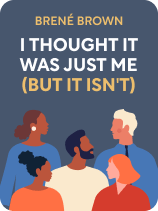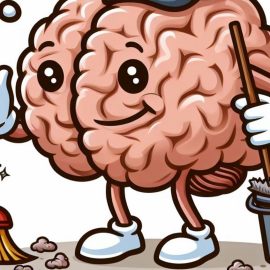

This article is an excerpt from the Shortform book guide to "I Thought It Was Just Me (but it isn't)" by Brené Brown. Shortform has the world's best summaries and analyses of books you should be reading.
Like this article? Sign up for a free trial here.
How can you overcome shame? How does society encourage shaming?
In I Thought It Was Just Me (but it isn’t), Brené Brown says that certain societal standards unfairly shame people for things beyond their control. To combat this, Brown recommends developing critical awareness of shame.
Learn how to overcome shame with critical awareness below.
Develop Critical Awareness of Shame
Brown explains that to learn how to overcome shame, you need to understand shame with critical awareness. Brown defines critical awareness (as it relates to shame) as an understanding of why we deem certain identities as shameful, how shame around these identities impacts society, who’s most affected by the shame of identities, and who benefits the most from them.
To develop critical awareness about shame, think of an identity that makes you feel ashamed. Which components of this shameful identity contradict society’s or your inner circle’s expectations? Then, think of the ideal you feel like you’re supposed to be living up to instead, and consider its impact on society at large: Who suffers because of this ideal’s existence, and who profits from it?
For example, you may feel ashamed for looking “poor” rather than “upper-class.” Looking “poor” could mean wearing unfashionable clothes or owning outdated technology instead of always wearing new, fashionable clothes and having the newest technology—these being things that society expects “upper-class” people to do. On a societal level, the shame around this identity causes people to judge each other’s worth based on the materials they own. This materialism probably serves to benefit big businesses at the expense of average people who feel ashamed for looking poor.
Critical awareness makes you realize that most disdained identities are unfairly demonized and stem from unrealistic expectations that harm one group of people to benefit another. Brown explains that this realization helps you combat shame in a few ways.
First, it makes you understand that failing to meet unrealistic or unfair expectations doesn’t make you defective (boosting courage). Second, it makes you realize that you’re not the only person suffering from these expectations and pressures—others are dealing with similar pain (fostering compassion). Finally, sharing this realization with others can decrease the prevalence of shame and help de-stigmatize “shameful” identities (helping you connect with others).
Classical Conceptualization and Interpretations of Critical Awareness
Originally, the concept of critical awareness, also called critical consciousness or critical perspective, was developed by a Brazilian philosopher, Paulo Freire, in an attempt to help students overcome academic oppression. He defined critical consciousness as the ability to recognize oppressive social constructs and expectations that shape society and take action to derail them—for instance, taking action to deconstruct the oppressive societal expectation of appearing “rich” that we discussed above. While Brown’s use of critical awareness applies specifically to “shame” rather than “oppression” as a whole, the underlying purpose of Brown’s critical awareness remains the same—to identify how and why people feel or are treated as lesser so that we can combat it.
While some experts interpret Freiro’s concept of critical awareness as only having one component, reflection, many experts interpret it as having two: critical reflection and critical action. Brown’s explanation of critical awareness seems to fall into the two-component interpretation of the concept.
Critical reflection requires you to (1) think critically about accepted beliefs, thoughts, feelings, and assumptions, (2) determine the hidden interests underlying these constructs, and (3) identify how they impact everyday life. This process of reflection aligns with Brown’s recommendation on how to develop critical awareness of shame.
Critical action requires you to act to minimize the oppression you discovered during your critical reflection. Experts note that critical action often manifests as women sharing advice, support, and information with each other. This process of critical action mirrors Brown’s advice to use your critical awareness to share your insights, provide support to others, and de-stigmatize disdained identities to prevent them from causing shame (and to boost courage, connection, and compassion in turn).

———End of Preview———
Like what you just read? Read the rest of the world's best book summary and analysis of Brené Brown's "I Thought It Was Just Me (but it isn't)" at Shortform.
Here's what you'll find in our full I Thought It Was Just Me (but it isn't) summary:
- Brené Brown's guide on what shame is, why it happens, how it impacts our lives
- How to build empathy and combat shame
- Why it's important to talk about shame with others






